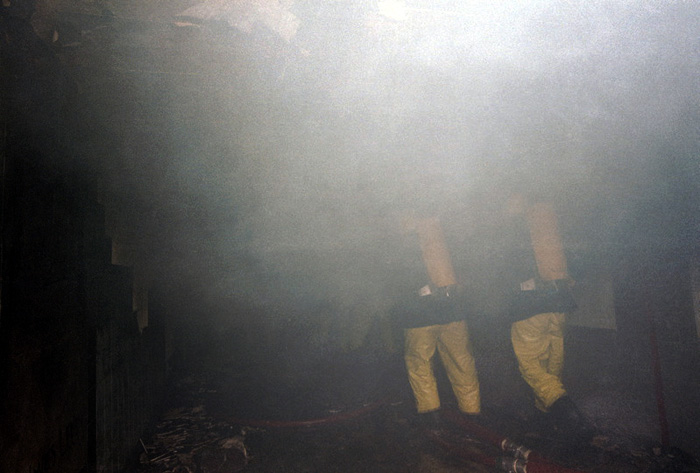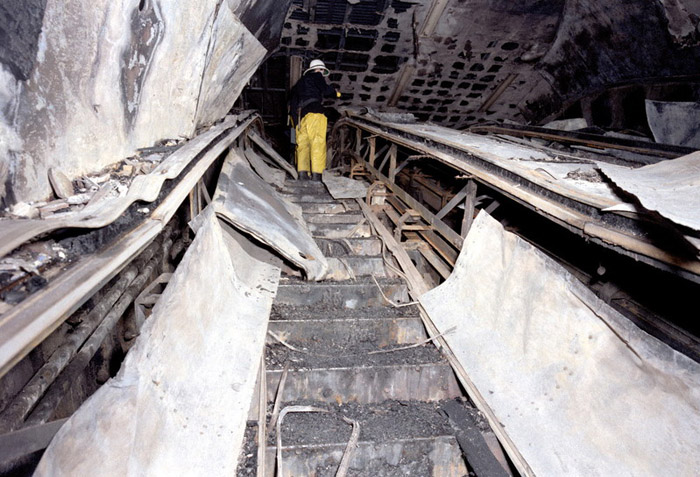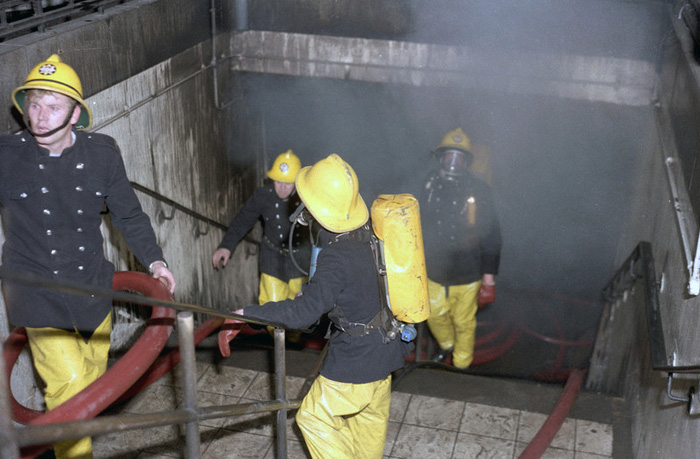The King's Cross fire changed how the Brigade tackles fires forever remembers Brigade’s Director of Operations Tom George.
Tom George was in training school at the time and was selected as part of two squads to attend the funeral of Station Officer Colin Townsley who sadly died at the blaze on 18 November 1987. He will join survivors, victims’ families and emergency service crews who attended the incident, at a special service to mark the anniversary on Saturday.
The worst fire in the history of the London Underground claimed the lives of 31 people, and seriously injured many more at King's Cross Station.
More than 150 firefighters and 30 fire engines tackled the blaze, which is thought to have started around 7:30pm, when a lit match fell through a gap on a wooden escalator and set fire to the grease and litter beneath the steps.

London Fire Brigade Director of Operations Tom George said:
“As we mark the 30th anniversary our thoughts are with all the victims and their friends and family. Following the King's Cross inquiry firefighter’s uniform, underground fire safety procedures and joint working between blue light partners were all improved and have helped save public and firefighter’s lives in the aftermath of the tragedy.”
Although small to begin with, described by one firefighter as "about the size of a large cardboard box", the flames at King's Cross heated the framework and decking of the Piccadilly Line escalator, pre-heating the rest of the wooden staircase before bursting into flames. Investigators labelled this behaviour of the flames lying down in the escalator, the 'trench effect'.

Many passengers escaped using an alternative escalator and all trains had been instructed not to stop at the station, however, the ticket hall was still busy with the last of the evening's rush hour crowd when the fireball erupted from the stairwell. The time shown by the clock at the top of the escalator read 7:45pm – the exact moment when the flames burnt through its wiring.
Among those caught up in the fireball was Soho's Station Officer Colin Townsley, who had entered the underground with a colleague, Temporary Sub-Officer Roger Bell, of Clerkenwell fire station, to assess the situation. The blaze cracked concrete, stripped tiles from the walls and caused molten plastic to drip from the ceiling. The thick smoke engulfed the ticket hall, obscuring the exits and hampering rescue efforts. Crews found the body of Station Officer Townsley beside the badly burned body of a passenger at the steps leading up to the Pancras Road entrance of the station.
Sir Desmond Fennell's report said all the evidence suggested "Station Officer Townsley was overcome by smoke and fumes while trying to help the burned passenger…a heroic act."

The fire was under control at 9:48pm and was out at 1:46am on 19 November. Search and salvage operations continued throughout the night.
The following operational changes have been made following the King's Cross fire;
Firefighters at King's Cross were wearing yellow plastic leggings, woollen tunics and red rubber gloves. The yellow plastic leggings could melt when subjected to intense heat making it difficult to remain protected from fire for large periods. The woollen tunics were similar to the ones worn by firefighters at the start of the Brigade’s history in 1866.
Important changes were also made in fire safety precautions especially on the underground. Wooden escalators were removed and underground staff were trained in recognising what they should do in the event of fire. There was a greater emphasise on what underground staff should do if there was a fire, something that wasn’t taken seriously enough before. The emergency plans were placed in a box outside every tube station which gave firefighters a better understanding of the lay out of tunnels. Today those plans are electronically available on the data terminals of our fire engines.
No smoking was enforced across the underground network, something which seems alien now but was common place in the 80s. Sadly smoking fires still make up the vast majority of fatal fires we attend.
Since King's Cross we put in place more robust and formalised reviews of our command and operations. Firefighters discuss and review their approach to incidents with a view to continually improving our response. Emergency services worked in isolation in the past and that is something that is very different in 2017. We work closely with our blue light partners and local authorities with everyone knowing their roles and responsibilities at incidents and this continuously gets fed back through meetings between agencies and debriefings afterwards.
It would take until another tragedy on the underground network to truly fix issues with communicating from some of the deeper tunnels to officers on the ground.
Following 7 July bombings all firefighters were given a personal hand-held radio with multiple radio channels and a dedicated channel for firefighters to share information and updates with each other throughout an incident. The Brigade has doubled the number of radios that can operate in potentially explosive atmospheres.
In 2013, a review of all the digital radio channels programmed meant that all fire and rescue services across the UK have the same capabilities. It also meant that the Brigade has a greater ability to talk with other agencies that can be involved in emergency response, such as the RNLI when responding to any emergency on the River Thames.
Working with Transport for London as part of their Connect programme, we can now communicate across the tube network including in tunnels between stations. Further improvements to the digital radio network in the London Underground allows for a greater number of simultaneous radio transmissions to take place.